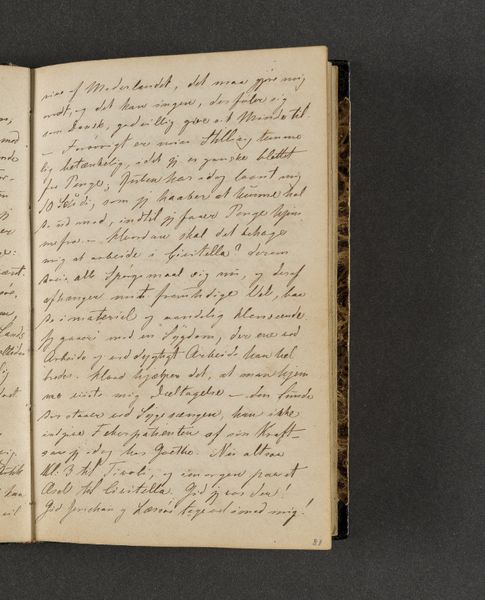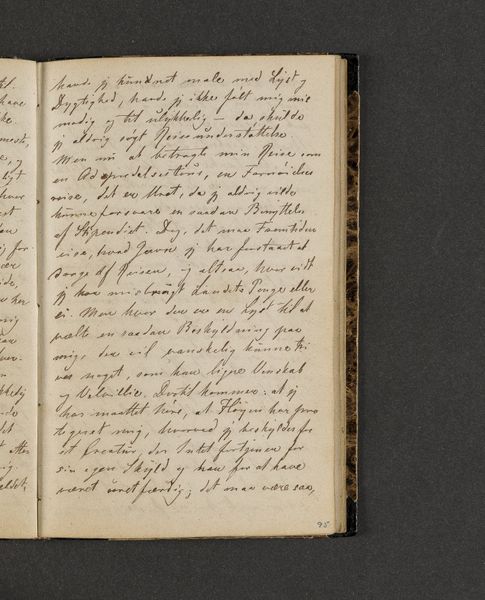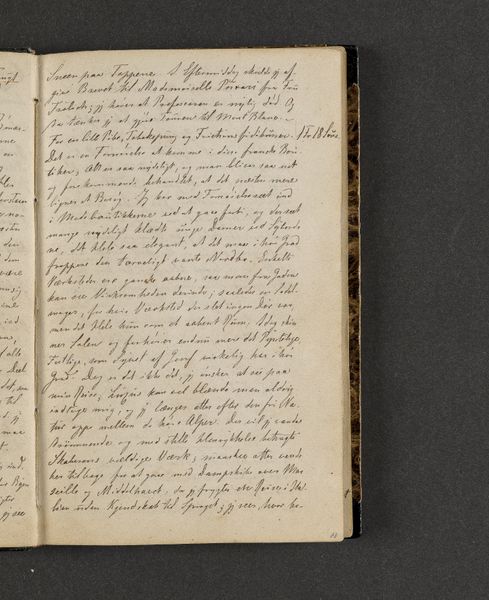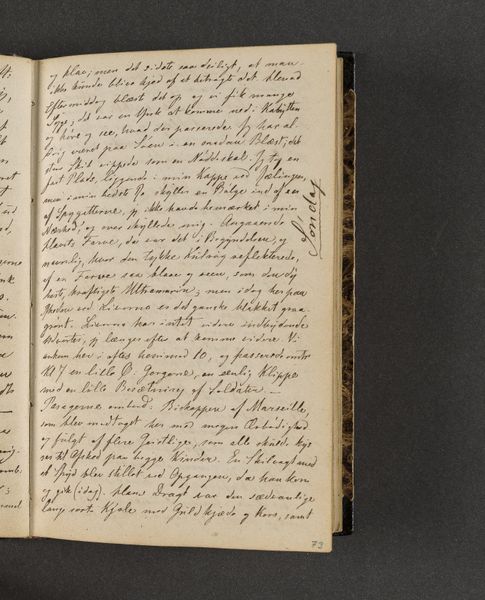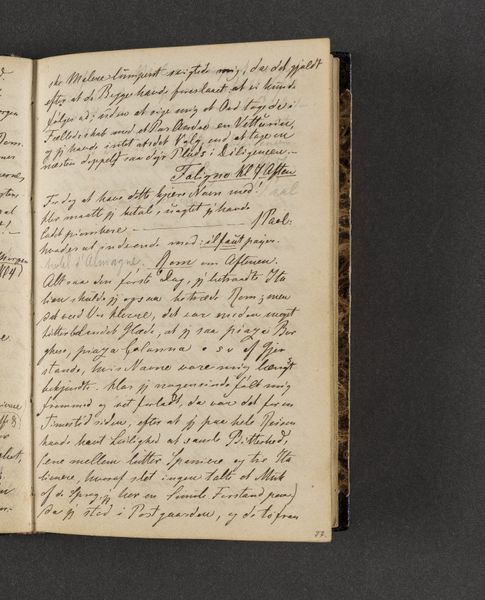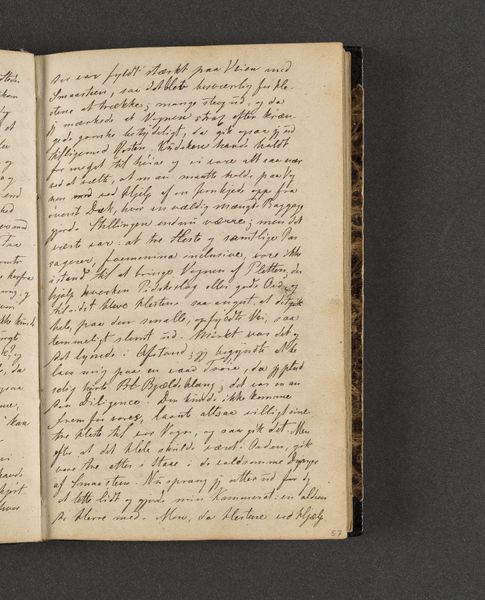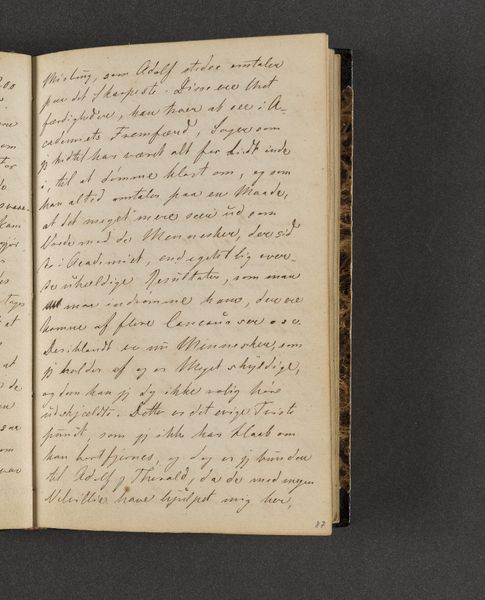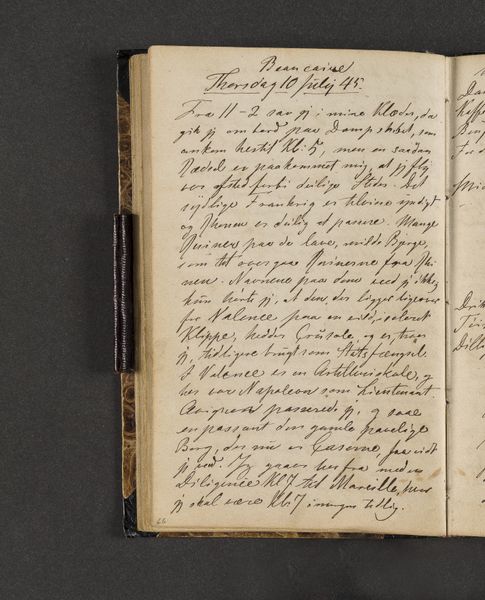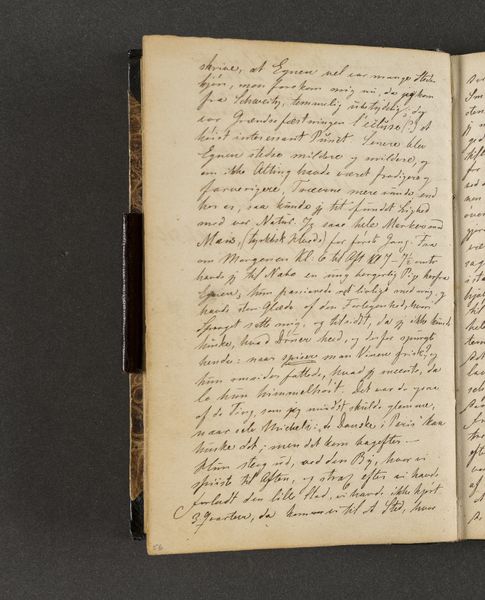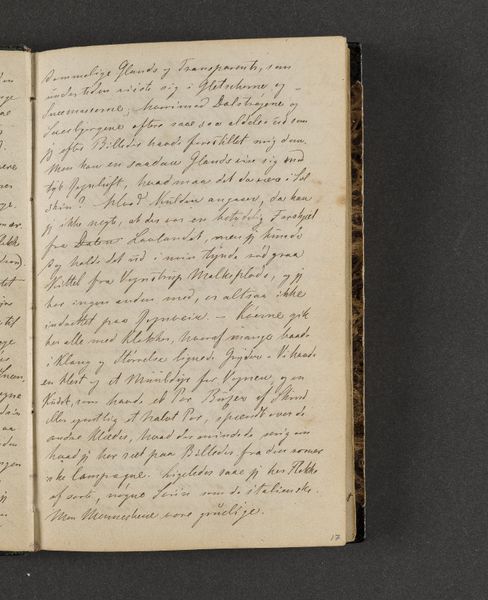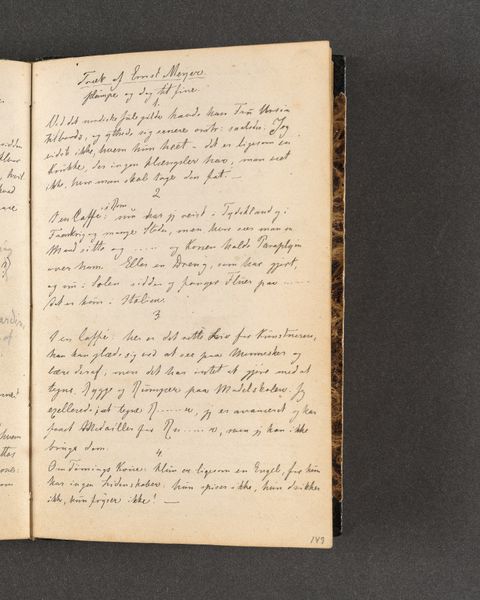
drawing, paper, ink
#
portrait
#
drawing
#
landscape
#
paper
#
ink
#
romanticism
Dimensions: 161 mm (height) x 103 mm (width) x 11 mm (depth) (monteringsmaal)
Curator: This open notebook page, "Rejsedagbog," or "Travel Journal" from 1845 by Johan Thomas Lundbye, rendered in ink on paper, really speaks to me. What do you make of it? Editor: It definitely has an intimate, personal feel. I like how simple and direct it is—no embellishment, just the artist’s handwriting filling the page. How does the text work in this piece, given that it's just an open notebook page? Curator: Consider how handwriting itself becomes a symbol of the author’s presence, their immediate thoughts made visible. What does the act of journaling suggest to you about Lundbye's approach to art and life? Editor: I guess it suggests he was a keen observer, documenting his thoughts and experiences directly. Almost like a stream of consciousness. Curator: Precisely. Think about the Romantic era context; it wasn't just about representing the world realistically but also capturing emotional experience. The written word here is as vital as any drawn sketch, offering a window into the artist's inner landscape. The notebook transforms into a cultural object, a kind of personal archive, where feelings and observations about nature and life are preserved. Editor: So the words themselves aren't as important as what they signify about the artist's process? Curator: It’s both. The words contain specific meanings that, while we can try to interpret, point towards larger, universal feelings. Even without knowing the language fluently, we can sense the introspection and immediacy. The visible record offers a continuity to a past. Editor: That’s a cool perspective! I hadn’t considered handwriting as carrying so much cultural weight. Curator: These journals open portals, quite literally, to an artist’s experience.
Comments
No comments
Be the first to comment and join the conversation on the ultimate creative platform.

